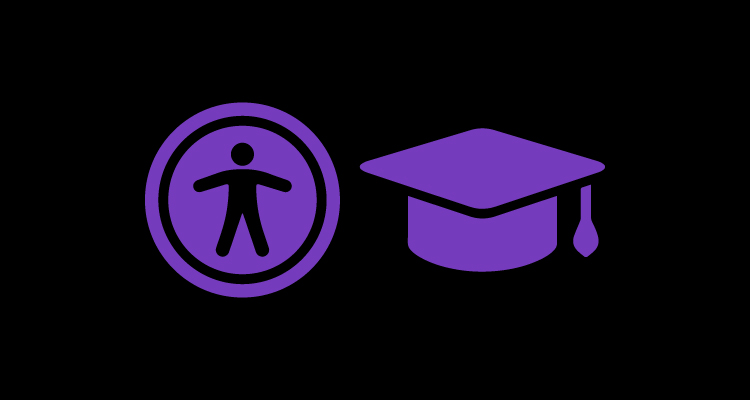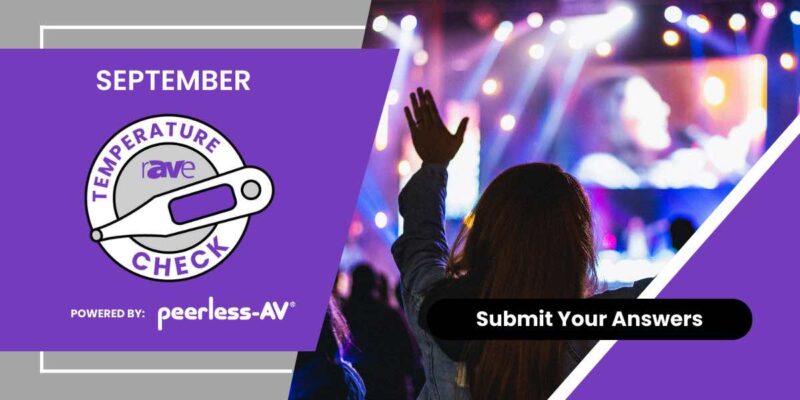COVID Will Have a Positive Lasting Experience on Accessibility

For years, many of us in higher ed have used the various laws associated with the Americans with Disabilities Act to determine what was required for accessibility in classroom and campus spaces. We thought about things like closed captioning for movies, support for hearing aids and the ability to view a screen properly.
However, this was often based on what we thought or were told we needed to do. These solutions tend to be expensive, so we provided them as accommodations for people who requested them — but with the quick turn to remote that we experienced in higher ed, many of these issues suddenly become real for people of all different abilities.
Perhaps the biggest one that everyone in higher-ed institutions has had to deal with is closed captions for EVERYTHING. Faculty, students and staff want all their Zoom discussions, videos and the like to have closed captioning. The result has been an improvement on two fronts.
First, we now realize more than ever that closed captioning is essential and valuable for all people, regardless of hearing abilities. I, for example, currently have closed captioning turned on all the time at my house. When we started using it for meetings at work, I realized what a benefit it was to every meeting. It is amazing the things I now know I was missing when not using them. Having had conversations with other people, it is clear they have had similar realizations.
The second thing that we have begun to discover is that closed captioning prices have started to fall. With an increase in demand, the AI behind it is getting better and producing more value for the companies. There is still a pretty steep price for in-person captioning (that is, a person, literally typing the content of a conversation), which is usually required and the right thing to do for people who have accommodations for hearing differences. However, the awareness that such services exist and the ability to integrate them into software is fantastic. Zoom has a feature that allows you to assign a guest the ability to perform the closed captioning in three clicks.
We also recognize that equipment that supports remote instruction from a classroom is no longer a “nice” thing to have. It is required now. In March, we were about halfway through the construction of a new science building. Several classrooms in that building had equipment built into them for class capture. But, for budgeting purposes, we identified several smaller rooms and labs that did not need the equipment. In our experience, our faculty did not use class capture in those settings. Over the course of the summer, we reversed directions and added the appropriate equipment to the budget for those rooms. Cameras, microphones and other equipment are now necessities in classrooms and other presentation spaces.
The immediate thinking is that the COVID restrictions may stay in place in one form or another for at least another year. We may start classes in the fall of 2021 with similar conditions as the fall of 2020. What people are not immediately recognizing is the long-term value this will bring and the options for accessibility. Now that every room has this equipment and any new additions, we can provide faculty and students with several options. Suppose a student has any medical, mental health or monetary issues that prevent them from being in a classroom on a given day. In that case, they will have the options of remote synchronous and asynchronous connections to the classrooms. Because we are now installing this in ALL spaces, there won’t be a question about whether the space supports it.
Additionally, our faculty are on a learning curve that is as steep as the students. They struggle to understand how to teach in a HyFlex environment and how to use the technology effectively. Yes, we will all be glad when we no longer need to do that because of a virus floating around, but the faculty will not forget everything they learned during this experience. There will be a large cohort of faculty who continue to use these tools from now on. In many cases, this may even be to benefit themselves. Faculty, just like students, are susceptible to myriad reasons they may not be able to make it into a classroom setting on a given day.
We spend a lot of time reading, writing and thinking about what things will be like when this pandemic has receded. In those situations, we often like to guess about things like “whether education will ever be the same” or “whether students will ever return to an on-campus setting.” I think we will more likely see changes like those described above that are not quite as flashy and controversial, yet far more consequential. This virus caused our higher-ed institutions to make ten years of change occur in six months. The massive steps taken that improve accessibility and universal design won’t be slowly forgotten but rather built upon to a more inclusive future.





